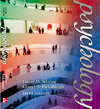 |  Psychology, 5/e Lester M. Sdorow,
Arcadia University
Cheryl A. Rickabaugh,
University of Redlands
Personality
Learning ObjectivesAfter studying this chapter, you should be able to: - Define personality and explain the significance of the "Barnum Effect" in relation to personality description.
- Summarize the important concepts and features of the psychoanalytic approach to personality including levels of consciousness, the structure of personality, the role of the various defense mechanisms, and the stages of psychosexual development.
- Describe the important concepts and features of Alfred Adler’s, Carl Jung’s, and Karen Horney’s neo-Freudian theories of personality.
- List and describe two psychoanalytically based personality tests.
- Describe the relative strengths and weaknesses of the psychoanalytic approach to personality.
- Explain what is meant by the dispositional approach to personality and describe the important features of Gordon Allport’s trait theory, Hans Eysenck’s three-factor theory, and the five-factor model.
- List and describe the origins of two commonly used personality inventories, emphasizing how each of them is used today.
- Describe the strengths and weaknesses of the dispositional approach to personality.
- Explain how personality may be inconsistent and consistent across situations.
- Describe the main focus of the cognitive-behavioral approaches to personality.
- Describe the key features of the social-cognitive theory of personality, including reciprocal determinism, self-efficacy, and collective efficacy.
- List and describe two cognitive-behavioral techniques of personality assessment.
- Summarize the current status of the cognitive-behavioral approach to personality, emphasizing its use in the psychological profiling of criminals.
- Describe the main focus of the humanistic approach to personality and contrast this with the psychoanalytic and behavioral approaches.
- Describe the important features of the self-actualization theory, the self theory, and the schema theory of personality, mentioning the use of the POI and Q-Sort in assessing personality.
- Summarize the strengths and weaknesses of the humanistic approach to personality.
- Offer a brief overview of the history of the biopsychological approach to personality.
- Describe the relationship between heredity and personality, emphasizing research on identical twins reared apart.
- Describe and summarize the major findings of two techniques used in the biopsychological approach to personality assessment.
- Summarize the strengths and weaknesses of the biopsychological approach to personality.
|
|



 2002 McGraw-Hill Higher Education
2002 McGraw-Hill Higher Education

 2002 McGraw-Hill Higher Education
2002 McGraw-Hill Higher Education